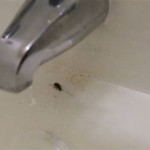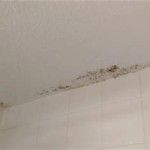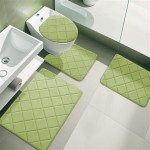Do Bed Bugs Go In The Bathroom? Understanding Bed Bug Behavior
Bed bugs are parasitic insects that primarily feed on human blood. They are notorious for infesting beds and other sleeping areas, causing itchy bites and significant distress. Understanding their behavior and preferred habitats is crucial for effective prevention and control. A common question that arises in discussions about bed bug infestations is whether they are likely to inhabit bathrooms. This article will explore the likelihood of finding bed bugs in bathrooms, the conditions that might attract them, and the best strategies for preventing infestations in all areas of a dwelling.
The primary reason bed bugs are associated with bedrooms is their proximity to their food source: humans. They are nocturnal creatures, preferring to feed while people are asleep. Bed frames, mattresses, box springs, and nearby furniture provide ideal hiding places for these pests. These locations offer darkness, shelter, and easy access to a blood meal. However, the question of whether bed bugs venture into other areas of a home, including the bathroom, requires a more nuanced understanding of their behavior and survival strategies.
Bed bugs are highly adaptable and can survive in a variety of environments, although they thrive in specific conditions. They prefer warm temperatures and readily available food sources. If a bed bug infestation is severe, or if conditions in the primary infestation area become unfavorable (e.g., overcrowding, lack of food), they may explore other areas of a building in search of new hiding places or alternative food sources. While the bathroom is not their preferred habitat, it is not entirely immune to infestation.
Why Bathrooms Are Not Ideal Habitats for Bed Bugs
Several factors make bathrooms less attractive to bed bugs compared to bedrooms or living rooms. Firstly, bathrooms are often characterized by high humidity levels. While bed bugs can tolerate a range of humidity, excessively moist environments can hinder their development and survival. Secondly, bathrooms typically lack the soft, fibrous materials that bed bugs prefer for hiding. They are more comfortable in cracks, crevices, and seams of mattresses, upholstery, and wooden furniture. Bathrooms, with their tile, porcelain, and metal fixtures, offer fewer such hiding places.
Thirdly, the availability of a food source is a critical factor. Bed bugs need to feed regularly to survive and reproduce. Bathrooms generally offer limited opportunities for feeding, as people do not typically sleep in bathrooms. While people may spend time in the bathroom, the duration is usually insufficient for bed bugs to feed unnoticed. The primary motivation for bed bugs to move from their established harborage is the search for food, and bathrooms are less likely to provide this resource compared to bedrooms or living areas.
Finally, cleaning practices in bathrooms can also deter bed bugs. Frequent cleaning with disinfectants and water can disrupt their habitat and make it less hospitable. Unlike carpets or upholstered furniture, smooth surfaces in bathrooms are easier to clean and are less likely to harbor bed bugs and their eggs. Therefore, while not impossible, it is less common to find a thriving bed bug infestation in a bathroom.
Conditions That Might Attract Bed Bugs to Bathrooms
Despite the less-than-ideal environment, certain conditions can make bathrooms more susceptible to bed bug infestation. A significant factor is the severity of an existing infestation in another part of the house. If a bedroom or living room is heavily infested, bed bugs may be forced to seek refuge elsewhere due to overcrowding or a lack of food. In such cases, they may venture into the bathroom, looking for any available hiding place.
Another influencing factor is the presence of clutter. If bathrooms are cluttered with items like laundry baskets filled with dirty clothes, piles of towels, or storage boxes, these items can provide hiding places for bed bugs. Dirty clothes, in particular, can attract bed bugs due to the presence of human scent and shed skin cells. These items can act as temporary havens for bed bugs traveling from an infested area to another part of the house. Therefore, maintaining a clutter-free bathroom is essential in minimizing potential harborage sites.
Furthermore, the proximity of a bathroom to an infested bedroom can increase the likelihood of bed bugs being found there. Bed bugs are capable of traveling considerable distances in search of food, and if a bathroom is adjacent to or directly above an infested room, they may inadvertently wander into it. They may travel through cracks in walls, gaps around pipes, or along electrical wiring. In multi-story buildings, bed bugs can also move between floors, potentially infesting bathrooms on different levels.
Finally, the presence of certain types of furniture in a bathroom can also make it more attractive to bed bugs. For example, if a bathroom contains upholstered chairs or wooden cabinets with cracks and crevices, these can provide suitable hiding places. Even a small wooden shelf can offer refuge for a few bed bugs. While less common, these items can create micro-habitats within the bathroom that are conducive to bed bug survival.
Preventing Bed Bug Infestations in Bathrooms and Throughout the Home
The best approach to dealing with bed bugs is prevention. Implementing proactive measures can significantly reduce the risk of infestation and minimize the need for costly and disruptive treatments. Several strategies can be employed to prevent bed bugs from establishing themselves in bathrooms and other areas of a dwelling.
Regular cleaning is essential. Maintaining a clean and clutter-free bathroom can eliminate potential hiding places and make it less attractive to bed bugs. Regularly vacuuming floors, wiping down surfaces, and washing towels and bath mats can help to remove any bed bugs or their eggs that may have been introduced. Using disinfectants can also help to kill bed bugs and their eggs on hard surfaces. Paying attention to cracks and crevices, particularly around plumbing fixtures and tile grout, is especially important.
Inspecting and laundering linens and clothing is also important. Regularly inspecting bed linens, towels, and clothing for signs of bed bugs or their droppings is a crucial preventive measure. Washing these items in hot water and drying them on high heat can kill any bed bugs or eggs that may be present. When traveling, it is advisable to keep luggage off the floor and inspect hotel rooms for signs of bed bugs before unpacking. Upon returning home, washing all clothing from the suitcase immediately can prevent the introduction of bed bugs into the home.
Sealing cracks and crevices in walls, floors, and furniture can eliminate potential hiding places for bed bugs. Using caulk or sealant to fill gaps around pipes, baseboards, and electrical outlets can prevent them from entering these areas. Regularly inspecting furniture for cracks and crevices and repairing them as needed can further reduce the risk of infestation. Attention should be given to areas where walls meet floors and ceilings, as these are common entry points for pests.
Using mattress encasements is another effective preventive measure, particularly in bedrooms. Mattress encasements create a barrier that prevents bed bugs from infesting mattresses and box springs. These encasements are typically made of tightly woven fabric that is impenetrable to bed bugs. Encasements should be installed properly, ensuring that all seams and zippers are securely closed. Regularly inspecting encasements for damage can help to maintain their effectiveness.
Being vigilant about bringing used furniture or items into the home is also essential. Inspecting used furniture, appliances, and electronics for signs of bed bugs before bringing them into the home can prevent the introduction of an infestation. Particular attention should be paid to seams, crevices, and hidden areas. If possible, cleaning or treating these items before bringing them indoors can further reduce the risk. It is also advisable to avoid bringing in discarded mattresses or furniture from the street, as these items are often heavily infested with bed bugs.
Finally, if a bed bug infestation is suspected, it is crucial to seek professional help. Pest control professionals have the expertise and equipment to effectively treat bed bug infestations. They can conduct a thorough inspection to identify the extent of the infestation and recommend the most appropriate treatment options. Treatment methods may include heat treatment, chemical treatments, or a combination of both. Following the recommendations of a pest control professional is essential for eradicating bed bugs and preventing re-infestation.
In summary, while it is less common for bed bugs to establish a primary infestation in bathrooms, they can be found there under certain conditions. Factors such as severe infestations in other areas, clutter, proximity to infested rooms, and the presence of suitable hiding places can make bathrooms more susceptible. Implementing preventive measures, such as regular cleaning, sealing cracks and crevices, and being vigilant about introducing used items, can significantly reduce the risk of bed bug infestations in all areas of a dwelling. Early detection and professional treatment are crucial for effectively managing bed bug infestations and preventing them from spreading.

How To Tell If You Have Bed Bugs While Traveling And What Kills Them

Bathroom Bugs Identification Guide How To Get Rid Of Each Type A Z Animals

Tips For Preventing The Spread Of Bed Bugs Nc State Extension Publications

How Do You Know If Have Bed Bugs Gregory Pest

Diy Instructions To Treat Ensemble

Bed Bugs State Of Alaska Department Health

Tips For Preventing The Spread Of Bed Bugs Nc State Extension Publications

Facts About Bedbugs When They Come Out How To Find Them During The Day

Bedbugs 2 14 21 Our Water World

Bed Bugs Biggest Impact May Be On Mental Health After An Infestation Of These Bloodsucking Parasites







